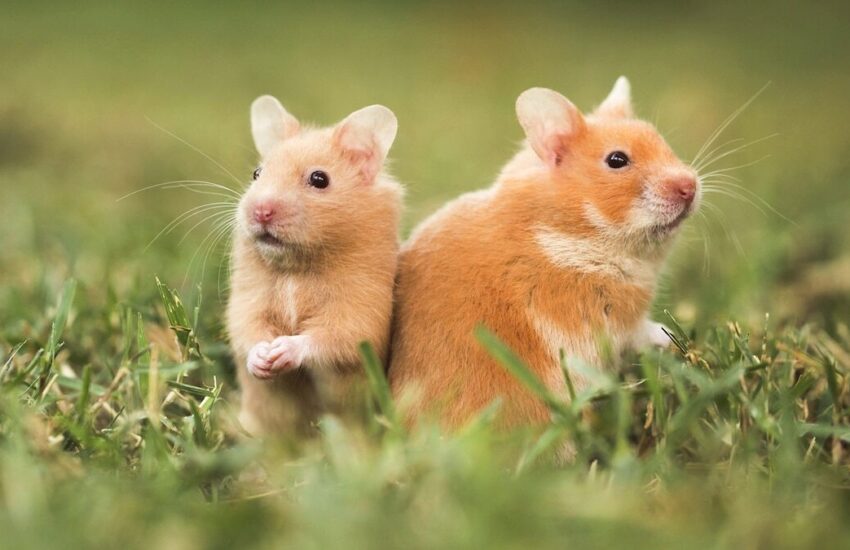Hamster Breed Overview
Hamsters are beloved pets for many, known for their adorable appearance and playful nature. There are several breeds of hamsters, each with unique characteristics and care needs. In this article, we will explore various hamster breeds, their traits, care guidelines, and how to choose the right hamster for you. Whether you’re a first-time hamster owner or looking to expand your knowledge, this guide will provide all the essential information on these tiny companions.
Types of Hamster Breeds
There are five main types of hamsters commonly kept as pets: Syrian, Dwarf Campbell, Dwarf Winter White, Roborovski, and Chinese hamsters. Each breed varies in size, temperament, and living conditions. Understanding these differences can help prospective owners make informed choices.
Syrian Hamsters

Syrian hamsters, also known as golden hamsters, are the largest and most popular breed among pet owners. They can grow up to 6 inches long and are known for their friendly nature. Syrian hamsters are solitary creatures, meaning they should be housed alone to prevent aggression. They come in various colors and patterns, making them visually appealing to pet lovers. When setting up a habitat for a Syrian hamster, a spacious cage with appropriate bedding, hiding spots, and an exercise wheel is essential.
Dwarf Campbell Hamsters
Dwarf Campbell hamsters are one of the smallest breeds, growing only about 3 to 4 inches in length. They are energetic and friendly, often making great pets for children. Unlike Syrian hamsters, Dwarf Campbell hamsters can live in pairs or small groups, providing they are introduced at a young age. A well-maintained habitat with plenty of toys will keep them engaged and happy.
Dwarf Winter White Hamsters
Dwarf Winter White hamsters resemble Campbell hamsters in size and shape but have a distinct coat that turns white in winter months. They are generally calm and easy to handle, making them excellent pets. These hamsters can be social, just like their Campbell counterparts, and thrive in a spacious environment with opportunities for climbing and running.
Care Needs for Hamsters
Caring for hamsters requires attention to their specific needs, including habitat care, diet, and social interaction. Each hamster breed may have slightly different requirements, so it’s essential to tailor their care accordingly.
Habitat Setup for Hamsters
A suitable habitat for hamsters should be secure, spacious, and well-ventilated. Hamsters naturally like to burrow, so deep bedding made of paper-based materials or aspen shavings is ideal. Providing multiple levels and hiding places can enhance their environment and reduce stress. Clean the cage regularly to maintain hygiene, and ensure fresh water is always available.
Diet and Nutrition
Hamsters require a balanced diet that consists of commercial hamster pellets enriched with vegetables and occasional treats like fruits and nuts. Avoid sugary foods that can lead to health issues. Fresh vegetables can be offered daily, and be sure to research the safe options before introducing them. Feeding them measured portions is essential to prevent overfeeding and obesity.
Socialization and Handling
Socializing your hamster is equally important to ensure they become friendly and comfortable around humans. Handling should begin gently, allowing them to get used to your scent and presence. Be patient, and provide regular sessions to strengthen the bond. However, always keep in mind that some hamster breeds, like Syrians, prefer solitude when it comes to playtime.
Choosing the Right Hamster for You
Choosing the right hamster breed depends on your experience level, living situation, and personal preferences. Knowing the distinct differences can significantly impact your decision.
For Beginners: Syrian and Dwarf Campbell Hamsters
For first-time owners, **Syrian hamsters** and **Dwarf Campbell hamsters** are excellent choices due to their manageable size and friendly nature. They are generally easy to care for and can be more interactive compared to other breeds. Make sure you have enough time and resources to properly set up and maintain their habitat before bringing one home.
For Experienced Owners: Chinese and Roborovski Hamsters
Chinese and Roborovski hamsters may require more experience as they can be quite skittish and are less tolerant of rough handling. Roborovski hamsters, in particular, are very fast and can escape easily; they are best suited for owners looking for an active pet that enjoys running and exploration.
Key Takeaways
- Syrian hamsters are friendly and solitary, while Dwarf Campbell hamsters can live in small groups.
- Care requirements include appropriate habitats, nutrition, and socialization practices.
- Selecting the right breed requires consideration of your living situation and experience.
- Regular handling and interaction are crucial for building trust with your hamster.
FAQ
1. What is the lifespan of a hamster?
Hamsters generally have a lifespan of 2 to 3 years, although some may live slightly longer. Factors influencing their lifespan include diet, habitat care, and genetics. Proper care plays a significant role in helping your furry friend thrive for as long as possible.
2. Can hamsters live together?
Some breeds, like Dwarf Campbell and Winter White hamsters, can live together if properly socialized from a young age. However, Syrian hamsters are territorial and should always be housed alone to prevent fights and injuries.
3. What should I feed my hamster?
A balanced diet for hamsters includes high-quality commercial hamster pellets, fresh vegetables, and occasional treats like seeds and nuts. Be cautious of the quantities to prevent obesity, and introduce new foods gradually to monitor for any adverse reactions.
4. How much space do hamsters need?
**Hamsters need plenty of space** to explore and exercise; a cage with a minimum size of 24 inches long by 12 inches wide is recommended. Keeping them in a larger multi-level cage can provide more opportunities for climbing and mental stimulation.
5. What are common health issues in hamsters?
Common health issues in hamsters include wet tail, dental problems, and respiratory infections. Regular vet checkups, maintenance of a clean habitat, and a balanced diet can greatly reduce the risk of these health problems.
